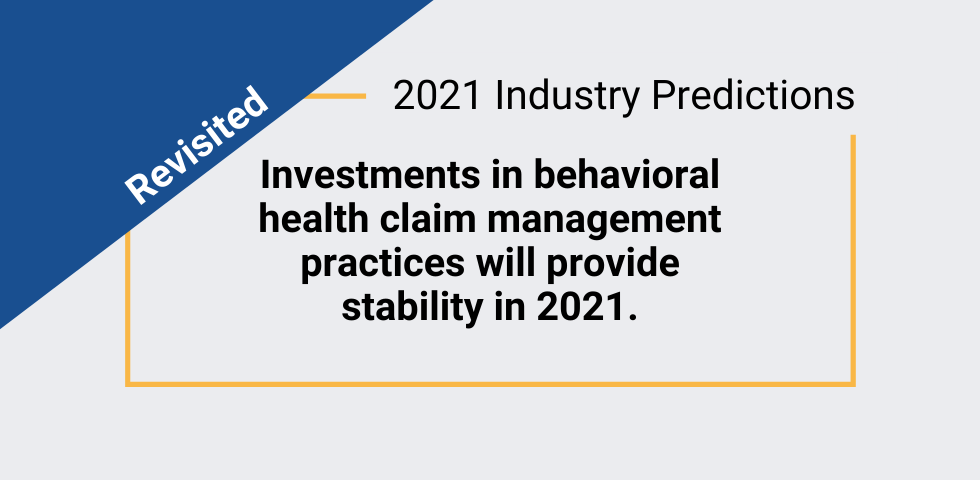Written by Mark Sawyer, CLU, VP of Claim Performance Solutions
Periodically throughout the past year, Brown & Brown Absence Services Group has shared our perspective on how and to what extent we believe COVID-19 will impact both the short-term disability (STD) and long-term disability (LTD) claim landscapes. Earlier this year, we developed a handful of predictions for the forthcoming months, including this one, stating that investments in behavioral health claim management practices would provide stability in 2021.
Since then, recent industry reporting has revealed several interesting findings through the first half of 2021, including:
- From July of 2020 – February of 2021, reported STD non-COVID claim volumes were down 2-5%, but recent trends are suggesting a return to pre-COVID levels.
- Through February of 2021, COVID claims represent almost 13% of all STD claims reported since March of 2020. Recent trends indicate that this figure is declining, as non-COVID claim levels are returning to pre-pandemic levels.
- Through February of 2021, both non-COVID and COVID claims were tending to offset each other, with the total STD claim incidence from March of 2020 – March of 2021 going up by about 1%.
- There seems to be a prevalence of COVID-related STD claims coming from industries that were not able to offer work-from-home (e.g., hospitals, manufacturing, etc.).
- While primary psychiatric diagnoses have not risen meaningfully for LTD claims, behavioral health issues may well be contributing to the complexity of STD claims.
- Predictably, the incidence of LTD respiratory diagnoses was higher than normal in recent months. Interestingly, the second highest increase in LTD incidence resulted from the “injuries” category. This is not yet well understood, but one likely explanation is that this is the result of mishaps from house projects and/or injuries from increased outdoor activities.
- Through March of 2021, there was no noticeable increase in the number LTD claims received as compared to pre-COVID data, although the first quarter of 2021 revealed a slight uptick.
- The industry feels confident that medical conditions related to “long-haul” COVID symptoms will become a mainstay, and will require a non-traditional approach to both treatment and disability claim management.
*Source: Smith Group STD and LTD Surveys – with 18 STD and 19 LTD participating carriers, respectively.
While these survey results do not yet demonstrate that primary behavioral health diagnoses have risen for LTD claims, it’s still early and there is ample time for trends to change. Of potentially greater consequence, though, is that co-morbid conditions related to behavioral health are likely playing a role in some STD claims that will, or have already, transitioned to LTD through the presence of additional complexity.
A study published in The Lancet Psychiatry found that over 30% patients who recovered from COVID-19 later developed neurological or psychiatric conditions within 6 months of infection, with anxiety and depression topping the list. For those whose condition required intensive care, that number increases to over 46%. Add to this the emergence of long-haul COVID symptoms, and the degree of nuance in managing disability claims will be even greater.
Our takeaway: Brown & Brown Absence Services Group continues to believe there will be an increase in the prevalence of claim complexity as a result of COVID-related issues. This will manifest not only in increases in claim incidence, but also possibly fewer LTD return-to-work outcomes and longer claim durations, due to issues like a lack of childcare, richer government benefits, and concerns about returning to the workplace.
Our earlier prediction continues to hold true: Carriers who have invested in a claim management model that applies early intervention to complex claims and a process to identify non-medical drivers, including motivation, perceptions of functional capacity, and perceived barriers to return to work, should expect to experience stable levels of recoveries and durations.




